Like the mason using his trowel to build, Bonamici uses the painter's knife to build his painting.
The building, the Old Gate, the plants and trees are made of the material and give this work sensuality, strength and solidity.
The work in its good original condition is presented in a beautiful wooden frame that measures 58.5 cm by 65.5 cm and 38 cm by 46 cm for the panel alone.
Signed lower left, it was probably made in 1919 in Corsica during a trip by the artist to the Isle of Beauty.
Seascapes, scenes of ports, fishing, coves but also bouquets of flowers, and the landscapes of a Provence bathed in sunshine are his favorite subjects.
He always uses the technique of knife painting like his contemporary Louis Pastour and sometimes that of watercolor. Some artistic critics see in him an influence of Adolphe Monticelli.
The artist was very present in painting salons between 1907 and 1935 in Martigues, Cannes, Nice, Toulon, Paris and Marseille. He also painted in Italy, notably in Venice, in Greece, and in North Africa. His trip to North America in 1923-1924 was immortalized by his views of California and exhibited in San Francisco, Los Angeles and New York during the interwar period.
His abundant production ensures the painter a certain financial ease thanks to a network of renowned gallery owners who open the doors to fame wherever he exhibits: Moullot in Marseille, Armand Drouant or Georges Petit in Paris, John Levy in New York. He was appointed painter to the Navy in 1921.
In the 1930s, Louis Bonamici settled in Le Lavandou where he remained until his death.
Louis Bonamici was naturalized French in 1912.
Martigues, Toulon, Bandol
Louis and Adèle Bonamici decide to settle in the South, Les Martigues, Toulon, Bandol, Marseille too.
In Toulon, he set up in a workshop on the port, at 3, quai du Parti.
As for François Nardi, this place is for him an inexhaustible source of subjects. He became friends with the family of the president of the Toulon commercial court, Étienne Bouché. On the coast there are several other refuges suitable for inspiration. In Martigues, he lived on rue du Figuier (in 1934, a commercial dispute forced him to go to court requiring the seizure of his house on rue du Figuier). It was there that he painted the Brescon quay.
Bonamici was appointed official painter of the Navy in 1921. At the time he obtained this distinction, he embarked on the Pothuau, a Navy cruiser, as a painter.
Corsica
Louis Bonamici traveled to Corsica in 1919. When he painted on the Isle of Beauty, the artist frequented the painter Lucien Peri: “In January 1929, Peri exhibited at the Parisian Georges Petit gallery, rue de Sèze. This gallery presents internationally renowned painters as well as regional and Provençal painters in particular such as Jean-Baptiste Olive, Paul Saïn, Louis Bonamici, André Strauss, Louis Soullard or Paul de Lassence, who often represented Corsica from the 1910s to the 1930. » Louis Bonamici also frequented the Bassoul gallery in Ajaccio, between 1910 and 1930.
Marseille
In Marseille, during the war, he exhibited his production at Moullot, a famous merchant of the time. He was established, before 1920, in the Phocaean city 3, quai de Rive-Neuve but probably did not stay long in this city. In October 1924, he was the signatory of a protest led by Eugène Montfort targeting the work on the Old Port of Marseille tending to remove the customs canal: “Eugène Montfort, who lives in Marseille part of the year, addresses this once sent a circular letter to a large number of Provençal artists in which he once again highlights the serious disadvantages which would result from this work. Here are the last lines: "We ask the artists, in order to try to make the authors of this unfortunate project think, and if there is still time, to stop their destructive fury, to kindly answer the following question: Don't you think that the canal is extremely picturesque, that it forms one of the adornments of Old Marseille, that its removal would be deplorable? Shouldn't the appearance it presents, not only from its edges, but from all the streets leading to it, be preserved with the greatest care? »
This call was heard and the Provençal of Paris published the responses of the numerous artists who added their voices to that of Mr. Eugène Montfort. Let us mention in particular MM. Lorise Brauquier, Charles Brun, Antoine Cavalier, François Berthet, Louis Bonamici, Henri Doller, Henri Guibert, Paul Marsac, Pierre Marseille, Étienne Martin, Dominique Offand, Jules Olive, Gontran Porten, Fernand Rambert, Léon Roque.
Louis and Adèle Bonamici traveled to Venice with Marguerite Bouché then to New York in 1923, to California where the Provencal painter exhibited at the San Francisco museum A Monterey Afternoon.
In 1924 they were still across the Atlantic: Los Angeles, San Francisco. He exhibits at John Levy 559, Fifth Avenue in New York.
Paris and Le Lavandou
Louis Bonamici does not break ties with the capital. He established relationships with certain renowned gallery owners in the capital, Armand Drouant (66, rue de Rennes) in March 1926 and Georges Petit. The Minister of the Navy decorated him with the Legion of Honor in July 1928: “We are happy to find among the new promoted to the rank of Knight of the Legion of Honor, the name of Mr. Bonamici, well-known painter in our city where he had his first successes. Mr. Bonamici is decorated as a painter of the Department of the Navy, and we extend our warmest congratulations to him. »
He also received the academic palms (at the time we said academy officer) in 1926.
He settled at the end of the 1930s in Lavandou, a seaside resort on the Var coast where he remained until his death.
He exhibited very young at the Cannes Salon, from 1908. On this occasion, art critics were circumspect about his technique: “Louis Bonamici, he, I believe, exaggerated the note: Blanchisseuse and Marines are gleaming, joined in full body but with conventional tones. Mr. Bonamici is a young person who experience will soften and make just as original but more sincere. »
He participated in the Cannes Salon in 1907: “The four paintings by Louis Bonamici certainly have valuable qualities, colors and execution, but they are a little surprising. The effects of the moon are difficult to translate and if the painter was successful in his painting moonbeams on the sea, where we do not see the moon, he was less successful in the moonrise in Carqueiranne, Marine in Carqueiranne and Marine , against the sky of which a bright full moon stands out”
The artist took part in a poster competition in the same city in 1912 and won a second prize.
He is also present at the Nice Salon: “The Salon des Peintures du Midi which has just opened in Nice, presents a very interesting collection of landscapes from Provence, the County of Nice and Corsica. For all those who love southern nature, it is a real pleasure to see, brought together in this exhibition, the violent canvases in which Mr. Bonamici expresses the beauty of the reddish coves of the Mediterranean coast. »
He was present with Louis Pastour (knife painting) at the Nice exhibition in 1926 after having already exhibited in Cannes in 1923 with him: “Louis Bonamici and Louis Pastour do knife painting; their navies have light, color, vigor. » During this show, the critics were generally laudatory: “I particularly noticed the works of MM. Bonamici, Louis German, Arluc and Tavel. Mr. Bonamici knows his job well; he practices it with a somewhat fierce verve. In his seascapes there is a power of evocation and an accuracy of interpretation worthy of praise. His Moonrise on the Open Sea satisfies both the eye and the mind. »
In Nice, in 1932, he discovered at a dealer a batch of paintings falsely attributed to his name and filed a complaint. He exhibited his paintings at Moullot in Marseille in December 1947, December 1948 and November 1950 among others. An exhibition in Hyères in 1990 – 1991 was organized by the Thévenin gallery including Au mouillage, White roses, Red and white roses and Place Orientale
Exhibitions in Paris
Louis Bonamici is present in several exhibitions at the Parisian gallery owner Georges Petit, which the press of the time echoed: “An exhibition at Georges Petit, classy, for the finesse of perception, for the discretion of feeling, G. Loiseau in the first row. The same gallery shows watercolors by Montagne and robust paintings by Bonamici. »
This gallery ensures Bonamici's Parisian notoriety: “Today takes place at the Galerie Georges Petit, 8, rue de Sèze, the opening of the very beautiful exhibition of works that the well-known painter Bonamici brought back from Provence and Veneto. Colorful canvases where the artist knew how to make the light of the South sing and bring out the noble poetry of landscapes with pure lines.
Le Figaro will devote, in an illustrated supplement, a study to this exhibition which will be one of the artistic events of the season. » This success is reflected in the price of his paintings:
Bonamici achieved a rare and successful success at the Galerie Georges Petit, where his exhibition took place; fans snapped up his paintings. He translates with incomparable passion the magical color of the coasts of Provence and the Etang de Berre; he does not exasperate his enthusiasm at the spectacle of the radiant lights; he lets it arise effortlessly, naturally, and he sings the catchy song of his country , in full voice, with all the enchantment of color and the sun, and all the elements, boats with bloody sails, transparent waters agitated with shivers, walls with dust of gold and fire, and azure sky light hovering over the sea with deep and serious tones, inexhaustible keyboard which he plays without fatigue and magnificently. »
Again at Georges Petit during the Lucien-Victor Guirand retrospective in Scevola.
Bonamici also exhibited at Armand Drouant in 1926, during the exhibition that the famous Parisian gallery owner organized on the painter Henri Martin.
Exhibitions in Nancy in 1913 then Lyon in 1927 (Pouillé-Lecoultre gallery, rue de la République) and 1928.
Out of France
Louis Bonamici exhibited at John Levy 559, Fifth Avenue in New York, notably in January 1925.
It is present at the Barcelona exhibition, presented by Louis Vauxcelles in 1927 and 1928.
He exhibited in Algiers in 1934
Louis Bonamici collaborated with the Nice tourist office in 1920 to produce a tourist promotional poster on the PLM. He also produced a Naviglio Grande multiple print in Milan. In 1950, he also produced a Marseille calendar published by Moullot with Un coin du Vieux-Port



























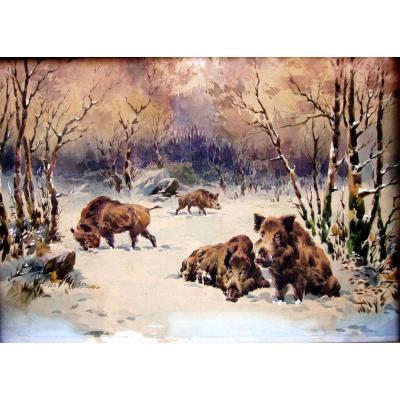


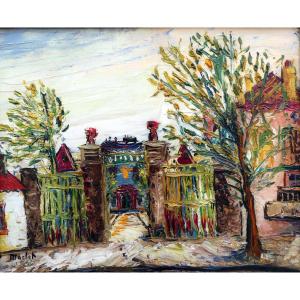


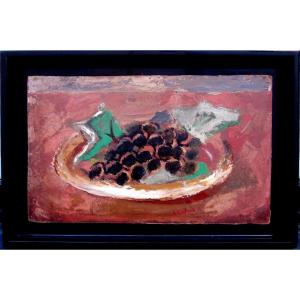
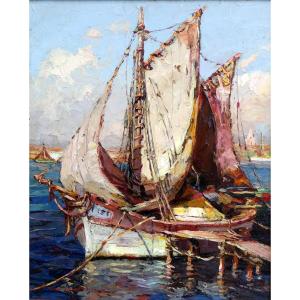
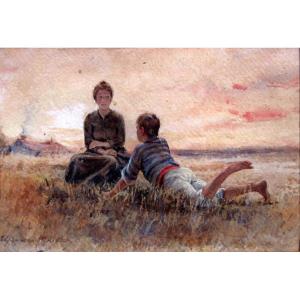
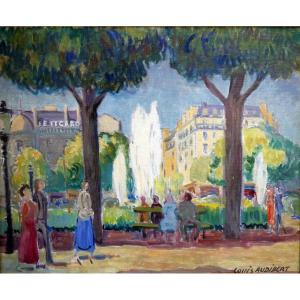
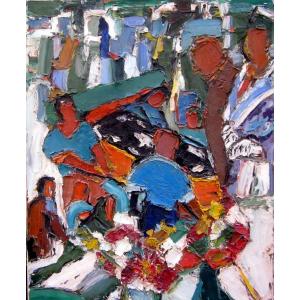



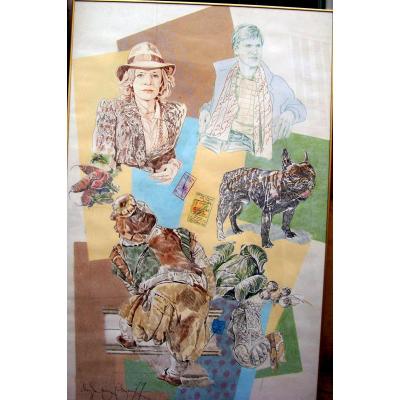
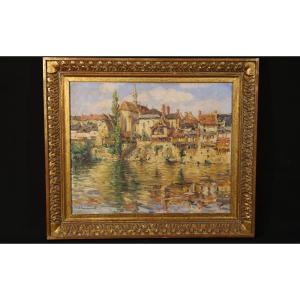



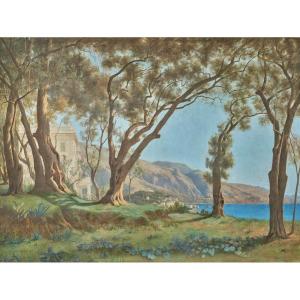



 Le Magazine de PROANTIC
Le Magazine de PROANTIC TRÉSORS Magazine
TRÉSORS Magazine Rivista Artiquariato
Rivista Artiquariato